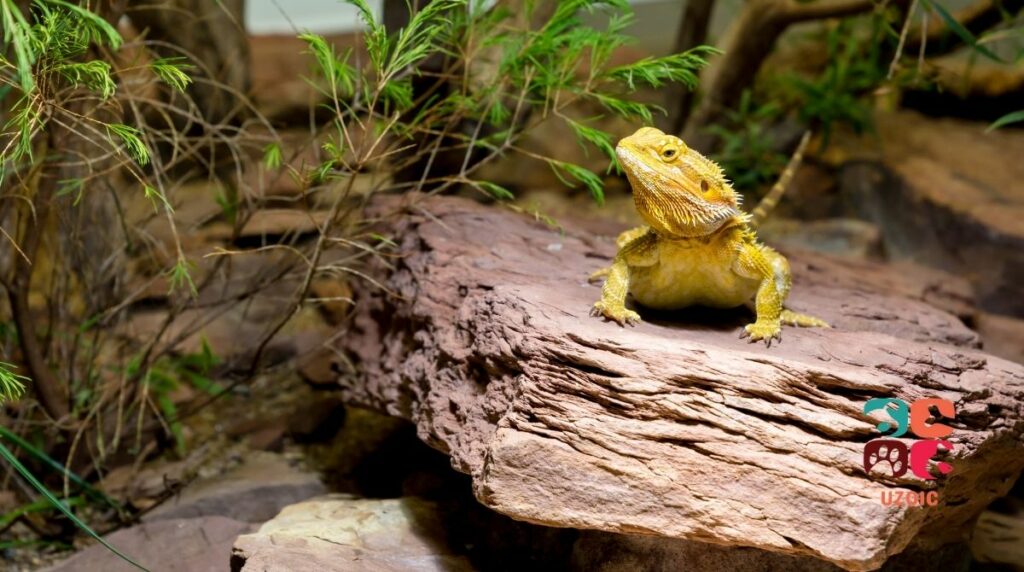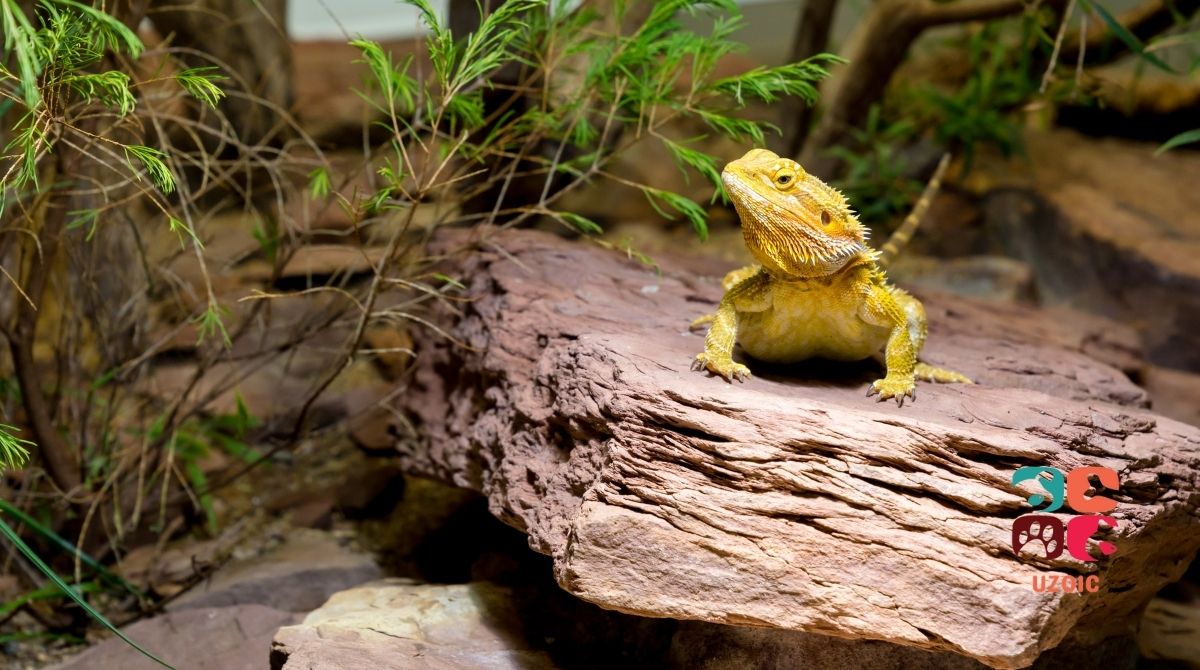If you’re looking for a fun and easy way to keep your Bearded Dragon entertained, then you should try making a Dig Box! This simple project can be completed in just a few minutes using some basic supplies. Your Bearded Dragon will love digging through the sand and finding hidden treasures!
Bearded dragons come from Australia, where they live in arid desert conditions. They spend most of their time basking in the sun or hiding in burrows to escape the heat in the wild. A dig box replicates their natural habitat and helps to keep them healthy and happy in captivity.
Table of Contents
What Is A Bearded Dragon Dig Box?

A bearded dragon dig box is a housing feature meant to provide your pet with a space to exercise their natural digging behaviors. The material used to make the box is often burrowing substrate, like sand, which allows your bearded dragon to tunnel through it easily. You can also fill a dig box with other materials that your bearded dragon can dig into, like soil or mulch. Bearded dragons often enjoy spending time in their dig boxes and use them as places to rest and hide. In addition to providing your pet with a way to express their natural behaviors, a dig box can also help keep their nails trimmed and claws healthy. It is also the place where the female will lay her eggs. As a result, a bearded dragon dig box is a beneficial housing feature for any pet owner to consider.
Uses of Bearded Dragon Dig Boxes
Bearded Dragon Dig Boxes serve a few different purposes:
- A way to exercise their natural digging behaviors.
- To keep their nails trimmed and their claws healthy.
- A place for your beardie to rest and hide.
- Lay eggs
Should Bearded Dragons Have A Dig Box?
While a Bearded Dragon Dig Box is not required, it is recommended. Bearded dragons are natural diggers and will often spend time digging in their enclosure, so a dig box provides an area where they can do this without damaging live plants or other objects in the enclosure. A dig box also allows you to control the materials your bearded dragon is exposed to, which is important for preventing intestinal impaction. Impaction is a serious condition that occurs when your bearded dragon ingests substrate that is too large or hard for them to digest. It can be fatal if not treated promptly.
Further, a dig box is a helpful place if the female wants to lay her eggs. Therefore, we recommend that you have a dig box for your bearded dragon for all these reasons.
Do All Bearded Dragons Need A Dig Box?
No, not every Bearded Dragon needs a dig box. If you have a Bearded Dragon that does not show any interest in digging, then they may not need or want a dig box. Some Bearded Dragons will use alternate areas as places to dig, so you may find that your pet doesn’t need a separate dig box. Also, dig boxes are required for female bearded dragons to lay eggs. A male may not be too excited about it.
How To Make A DIY Bearded Dragon Dig Box!
If you’re looking for a fun and easy way to keep your bearded dragon entertained, consider making a DIY dig box! All you need is a medium-sized plastic container with smooth sides (to prevent injury), some sand or potting soil, and some small rocks or decorative pieces. First, fill the bottom of the container with sand or soil. Then, add the small rocks or decorative pieces. Make sure that the items you choose are safe for bearded dragons and that they are not too large (which could pose a choking hazard). Place the container in your bearded dragon’s enclosure once you’ve added the sand or soil and rocks/decorations. They will quickly learn that it’s a fun place to dig and hide!
What materials are needed for a Bearded Dragon Dig Box
To make a Dig Box, you will need:
- A shallow box or plastic container
- At least 4-6 inches of sand substrate or another substrate
- Something to create tunnels or hiding places, such as rocks or PVC pipe
- A basking light
Bearded Dragon Dig Box Size and Substrates
The size of the dig box should be at least twice as long as your bearded dragon is long and half as wide. The substrate should be at least 6 inches deep to give your bearded dragon enough room to dig and burrow. Some good substrates to use in a bearded dragon dig box include sand, dirt, clay, vermiculite, and peat moss. Be sure to avoid using any substrates that could be harmful.
Temperature and Humidity: How Warm and Humid Should A Bearded Dragons Dig Box Be?
Bearded dragons come from hot, arid climates, so they are used to living in environments with high temperatures and low humidity levels. However, bearded dragons cannot always control their environment as easily when kept as pets. As a result, it is important to create a habitat that closely resembles their natural environment.
The ideal temperature for a bearded dragon’s dig box should be between 85-95 degrees Fahrenheit during the day. However, the temperature can drop to 75-85 degrees Fahrenheit at night. It would be best if you kept the humidity level between 30-40%, but you can keep this to 50-60% without any problems. You can achieve these levels by using a combination of basking bulbs, reptile fogger, or misting the enclosure several times. By mimicking their natural habitat, you can help your bearded dragon stay healthy and comfortable. We recommend that you also get a digital thermometer/hygrometer combo set. It will help you keep track of temperature and humidity levels throughout the day.
Conclusion
Giving your bearded dragon a dig box can be a fun way to help them express their natural behaviors and keep them healthy and happy. It is also a great way to keep your Bearded Dragon entertained and provide them with a place to lay their eggs. Use the proper substrate, size the box accordingly, and maintain the correct temperature and humidity levels. By following these simple steps, you can create a safe and fun environment for your beardie! If you’re unsure if your beardie needs one, it can’t hurt to try, but always check with your vet first. Thanks for reading! We hope this helped.


